Test 2
1/116
Earn XP
Description and Tags
Name | Mastery | Learn | Test | Matching | Spaced |
|---|
No study sessions yet.
117 Terms
Truncation Errors
Refer to errors in a method, which occur because some series (finite or infinite) is truncated to a fewer number of terms.
Such errors are essentially algorithmic errors and we can predict the extent of the error that will occur in the method.
(e.g. π ≠ 3.14 ≠ 3.14159 but they are approximate)
Round-off errors
Round off error occurs because of the computing device's inability to deal with inexact numbers.
Such numbers need to be rounded off to some near approximation which is dependent on the space allotted by the device to represent the number
Absolute Error
= true value - approximation
Shortcoming: an error of a micrometer is much more significant if we are measuring the size of a cell in comparison to the length of your arm.
So how do we account for the size of the error with respect to the magnitude of the measurement?
Fractional Relative Error
= (Absolute error/true value)*100%
The relative error gives an indication of how good the approximation is relative to the true value
These will be needed when we talk about propagating errors (i.e. combining multiple values that each have an error associated with it)
Variance
a measure of how data points differ from the mean
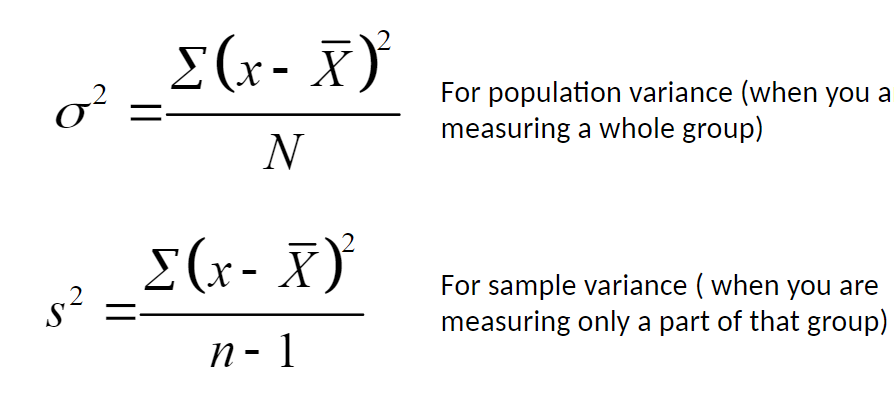
Standard Deviation
a measure of variation of scores about the mean
the average distance to the mean, although that's not numerically accurate, it's conceptually helpful. All ways of saying the same thing: higher standard deviation indicates higher spread, less consistency, and less clustering
Square root of variance
std() provides the sample standard deviation
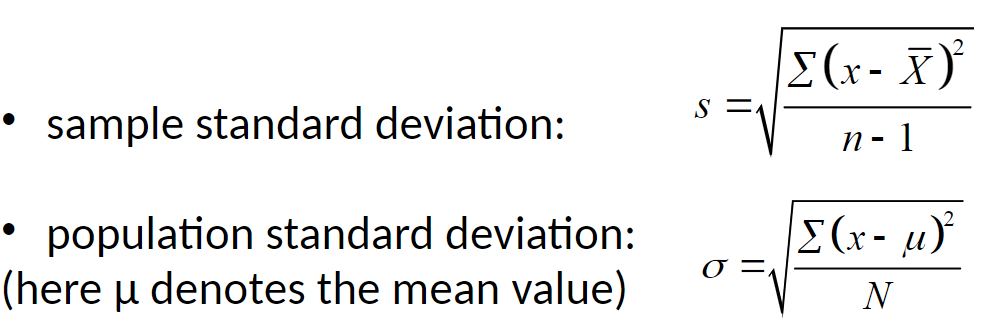
Dot-operations
use the “.” for element-by-element level
So use .* or ./ or .^ instead of * or / or ^
Matrix multiplication vs array multiplication
Use “.” before operator for array calculations
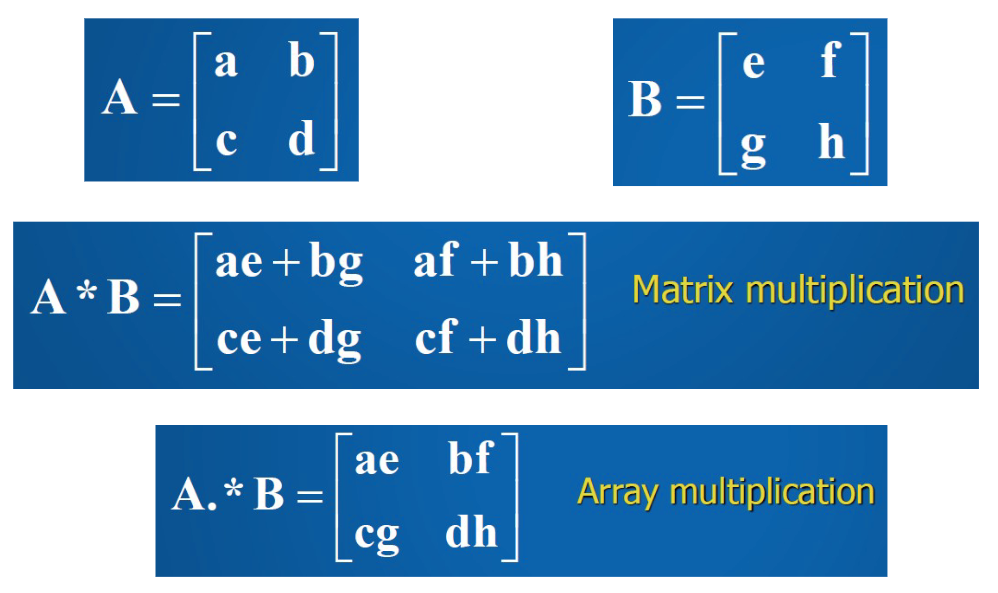
Defining Matrices
Enclosed in square bracket [ ]
Commas separate columns
Semicolons indicate a new row
![<p>Enclosed in square bracket [ ]</p><p>Commas separate columns</p><p>Semicolons indicate a new row</p>](https://knowt-user-attachments.s3.amazonaws.com/11b98241-f1bb-419a-ab7f-b324a988c4d8.jpeg)
Indexing arrays
Indexing can also be used to change values in a matrix or include additional values
Colon notation
Can be used to define evenly spaced vectors with a defined increment in the form:
first:increment:limit
linspace
Can be used to define evenly spaced vectors with a in the form
linspace(X1, X2, N)
generates N points between X1 and X2
Transpose
changes all of the rows of an array to columns and all of the columns to rows, B=A’
Concatenation
Creating a new matrix out of two previous matrices added as separate rows, C=[A; B]
![<p><span>Creating a new matrix out of two previous matrices added as separate rows, C=[A; B]</span></p>](https://knowt-user-attachments.s3.amazonaws.com/85200656-71da-4662-bd73-8cd159f5c988.png)
Plotting in 2D
Create 2 vectors
Use the plot(x,y,’format’) command
Will create a plot of y vs x
Format examples in pic
To plot again of same plot use the hold on command

Subplots
Allows for putting multiple graphs in one figure
subplot(m,n,p) divides graphing window into a grid of m rows and n columns, where p identifies the part of the window where the plot will be drawn
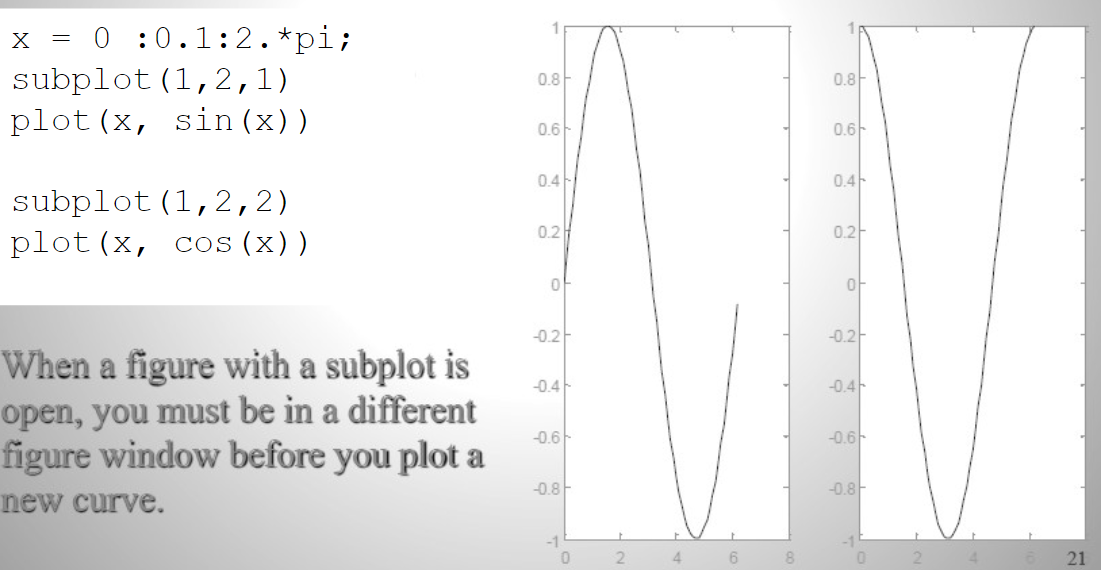
Polar plots
To plot polar coordinates (angle vs radius) use polar(angle,radius)
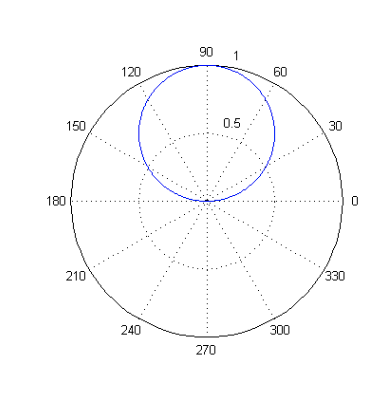
Logarithmic plots
3 kinds:
semilogx
semilogy
loglog
Replace linear scales with logarithmic scales

Linear regression
minimizes the squared distance between experimental data points and the modeled data points. This prevents positive and negative values from cancelling each other out
Use polyfit(x,y,polynomial degree) function with polyval() if necessary
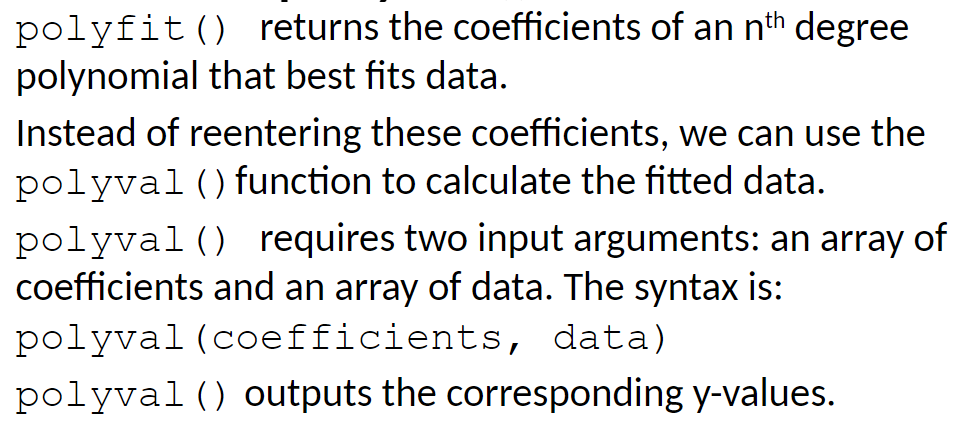
fplot
“smart” command for plotting functions
Automatically analyzes the function to be plotted and decides number of plotting points to show all the features of the function
fplot(function,[xmin xmax])
![<p>“smart” command for plotting functions</p><p>Automatically analyzes the function to be plotted and decides number of plotting points to show all the features of the function</p><p>fplot(function,[xmin xmax])</p>](https://knowt-user-attachments.s3.amazonaws.com/d69165e6-79bb-446d-b889-dc3cbe61a515.jpeg)
3D plots
plot3
graphs of 3 axes
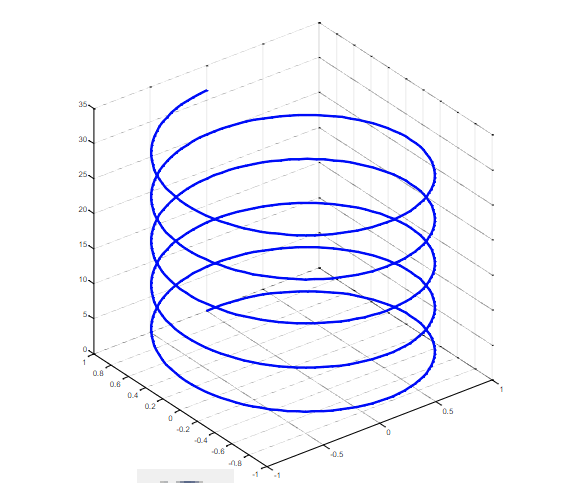
Surface mesh plots
meshgrid()
mesh(,,)
Create a rectangular grid out of an array of x values and an array of y values
To fill in the faces of the surface in color use
meshgrid()
surf(,,)
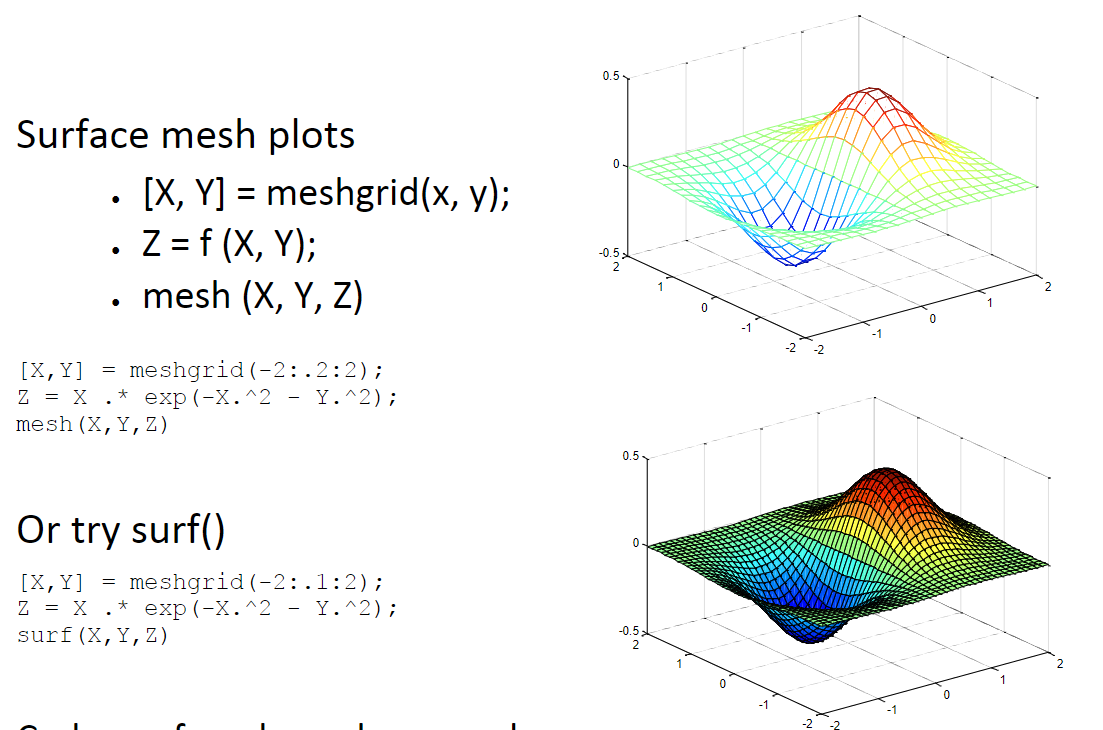
Contour Plots
a 3-D surface by plotting lines that connect points with common z-values along a slice

Things plots need
a title
axis label with the name of quantity and units
same symbol of each data point in a given data set
grid
a legend
regularly spaced tick marks at convenient intervals along each axis.
Syntax Errors
Syntax errors are errors in a MATLAB statement itself, such as spelling or punctuation errors
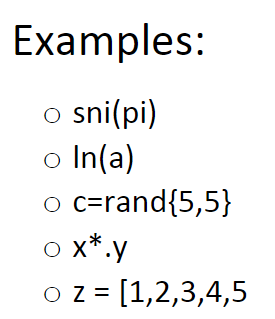
Run time Errors
illegal operations
exceeds the dimensions of that matrix
Logical Errors
when the program runs without displaying an error, but produces an unexpected result
very difficult to find.
compare simple test cases with known correct results to find where errors occur
Less than
<
Greater than
>
Equal to
==
Less than or equal to
<=
Greater than or equal to
>=
Not equal to
~=
Logical Operator
Produces logical result (1 or 0), and &, not ~, or |
And (logical operator)
&
is true when all of its operands are true
Not (logical operator)
~
is true when its operand is false
Or (logical operator)
|
is true when one or more of its operands are true
Hierarchy of Operations
Parentheses ()
Exponentiation (.^)
NOT operator (~)
Multiplication (.*) and division (./)
Addition (+) and subtraction (-)
Less than (<), less than or equal to (<=), greater than (>), greater than or equal to (>=), equal to (==), and not equal to (~=)
AND operator (&)
OR operator (|)
VPA Arithmetic
MuPAD, vpa(), variable precision
in between for time and accuracy
Alternatives:
Rational MuPAD: more accurate, exact result, slowest
Numeric MATLAB: less accurate, faster, floating point
is Functions
ischar() input is character array
isfinite() input is finite
isinf() input isinfinite
isletter() input is alphabetic letter
isnumeric() input is numeric array
Pseudocode
Verbal description of your plan for writing a program
Written in English or as a combination of MATLAB code and English
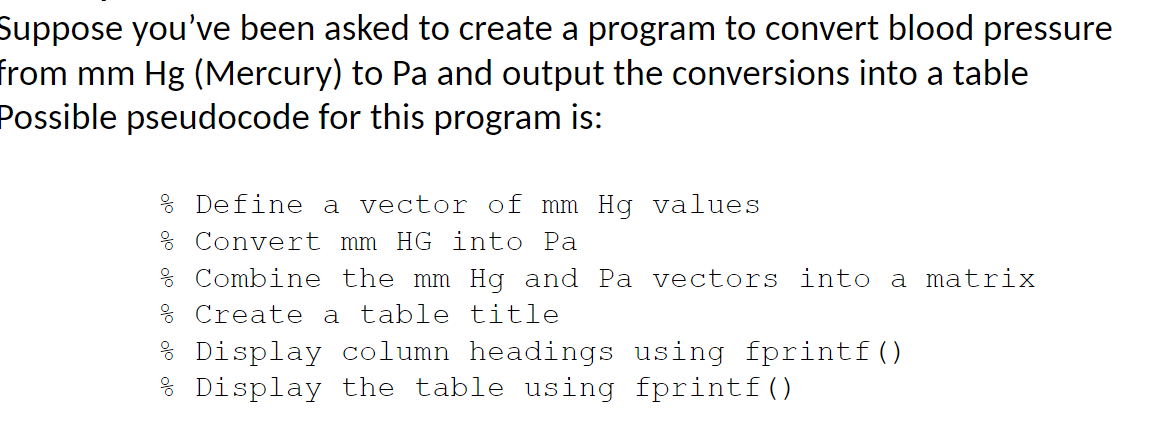
Flowcharts
graphical approach to creating a coding plan
Epecially appropriate for planning large or complicated programming tasks
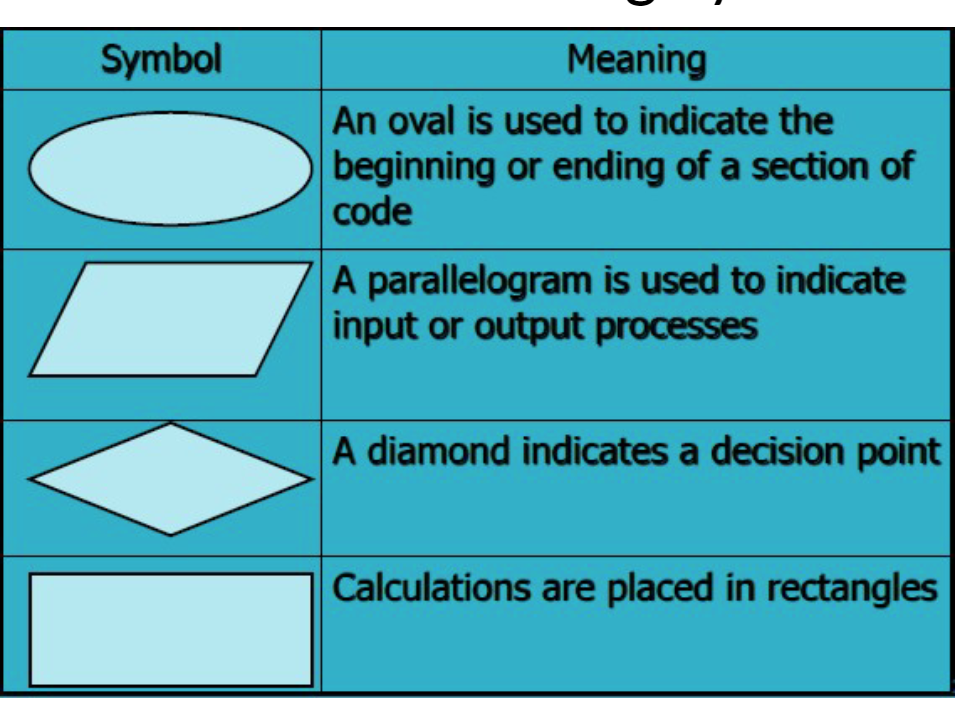
if statement
allows us to execute a series of statements if a condition is true and to skip those steps if the condition is false
can add else statements and if else
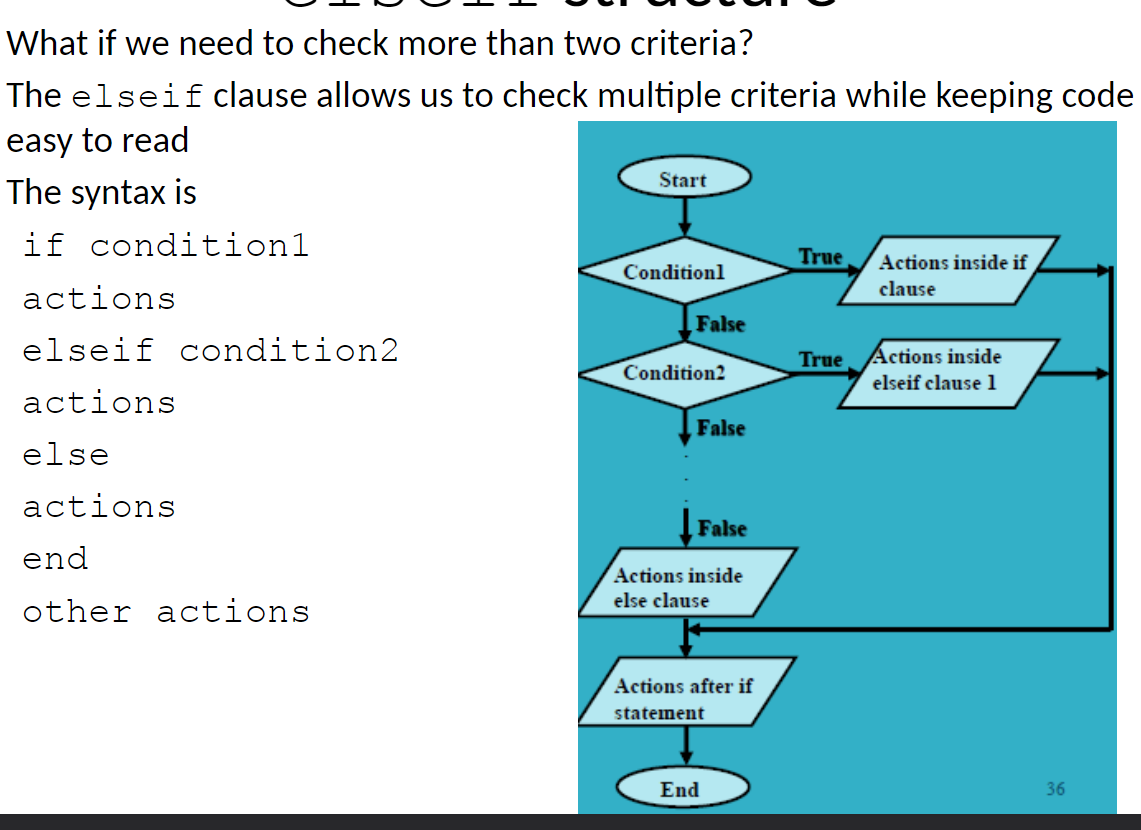
Nested if statements
If statements can be nested within each other
Allow you to choose 2 parameters of interest
for loop
repeat a block of commands for a specified matrix which is known before the loop is executed
indexed

one loop _ be written inside another loop
one loop CAN be written inside another loop
Called a nested loop
while loops
Loops are MATLAB constructs that allow a sequence of MATLAB statements to be executed more than once
loops repeat a block of commands as long as an expression is true (1)
The loop ends when the expression is false (0) and any code following the loop (after the end) is then executed
useful for repeating a procedure an unknown number of times as long as a certain statement is true
can be used to acquire data in experiments
useful when a procedure needs to be repeated until a specific criterion is met
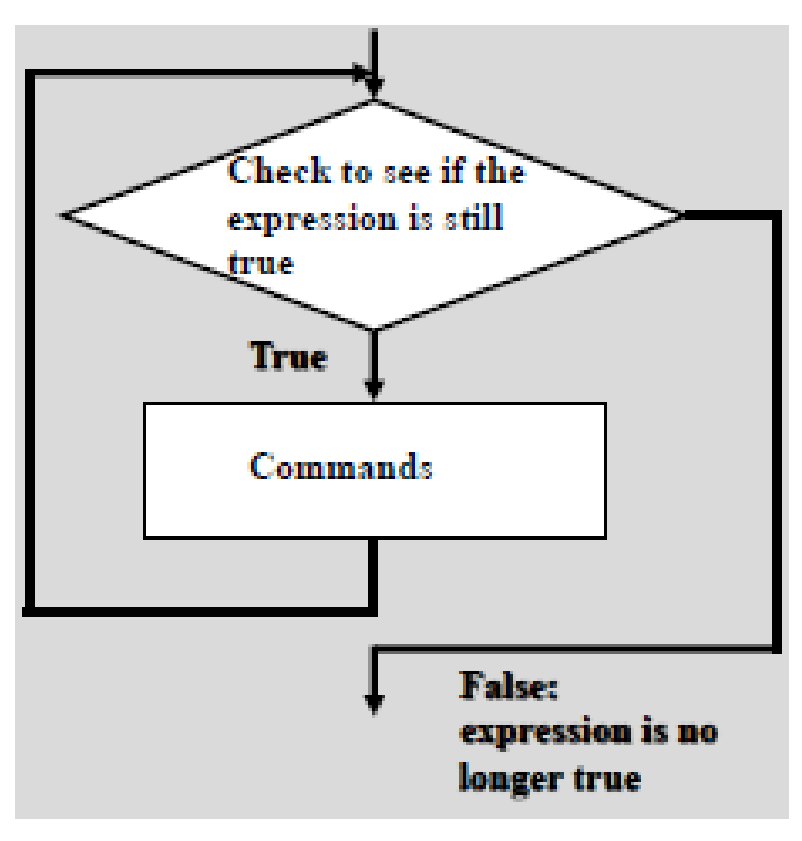
Components of a while loops
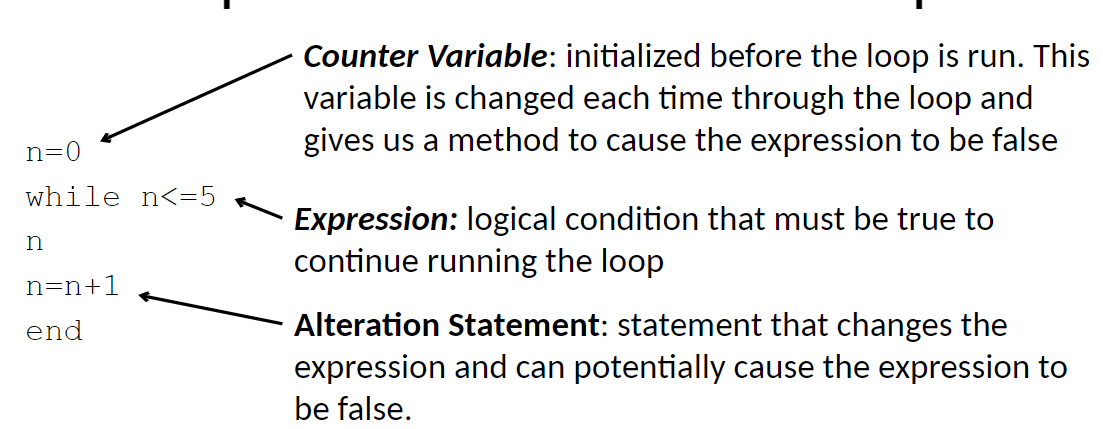
Built-in timer function
tic toc
tic starts the timer
time elapsed since the timer was started is given by the built-in function toc
Writing Functions
function [output1 output2] = function_name(input1, input2, input3)
output1 = equation using inputs
output2 = equation using inputs
end
Data import/Export
uiimport(name)
xlsread(‘filename.xls’) - in matlab folder, read excel
xlswrite(‘filenamr.xls’, M) - writes array M into excel
load <filename>
Exponential Growth
population & linear growth, compound interest
Increasing, asymptotic to the left
y=Ce^kt
Exponential Decay
radioactive decay, depreciation, fluorescent decay, learning, sales, stress
y=C(1-e^-kt)
y=Ce^-kt
Logarithmic Growth
population growth with limiting factors, acidity, sound, sigmodal curve
y=1/(1+be^-kt)
y=a+b*ln(t)
Converting a for loop into a while loop
One can change any program written with a for loop into a program written using a while loop instead
Change the index matrix of the for loop into an expression or set of variables that can be used in the while loop
for index → i=0
while i<length(index);
commands;
i=i+1; end

Converting a while loop into a for loop
while expression →
for index=data;
if expression break;
end;
commands;
end
Text File Types
Binary - fast, complicated, “native” format, .xls, .doc, .mat
ASCII - matlab, text editor, simple, .txt, .dat, .cvs
break statement
can be used to terminate a loop prematurely
cause termination of the smallest enclosing loop
How to improve loop efficiency
pre-allocating space for a placeholder variable before entering the loop
Command to display text and matrix values
fprintf()
Different place holders for fprintf
Need in the format-string in order for variable to show up in your display on the command window
%d - integer notation
%f - fixed point notation (decimal)
%e - exponential notation
%g - whichever is shorter between %f or %e (insignificant zeros do not print)
%c - character information
%s - string of characters
normal distribution/gaussian
a probability distribution that is symmetric about the mean, showing that data near the mean are more frequent in occurrence than data far from the mean. In graphical form, it appears as a "bell curve"
trapz(y)
MATLAB function for trapezoidal area under the curve
Normal Probability Plot
x values vs. z values or normplot(x)
right skew - plot bends up and left
left skew - plot bends down and left
short tail - less variance than expected
long tail - more variance than expected
What is the area of a normal curve within 1 standard deviation (between μ+σ and μ-σ)
68%
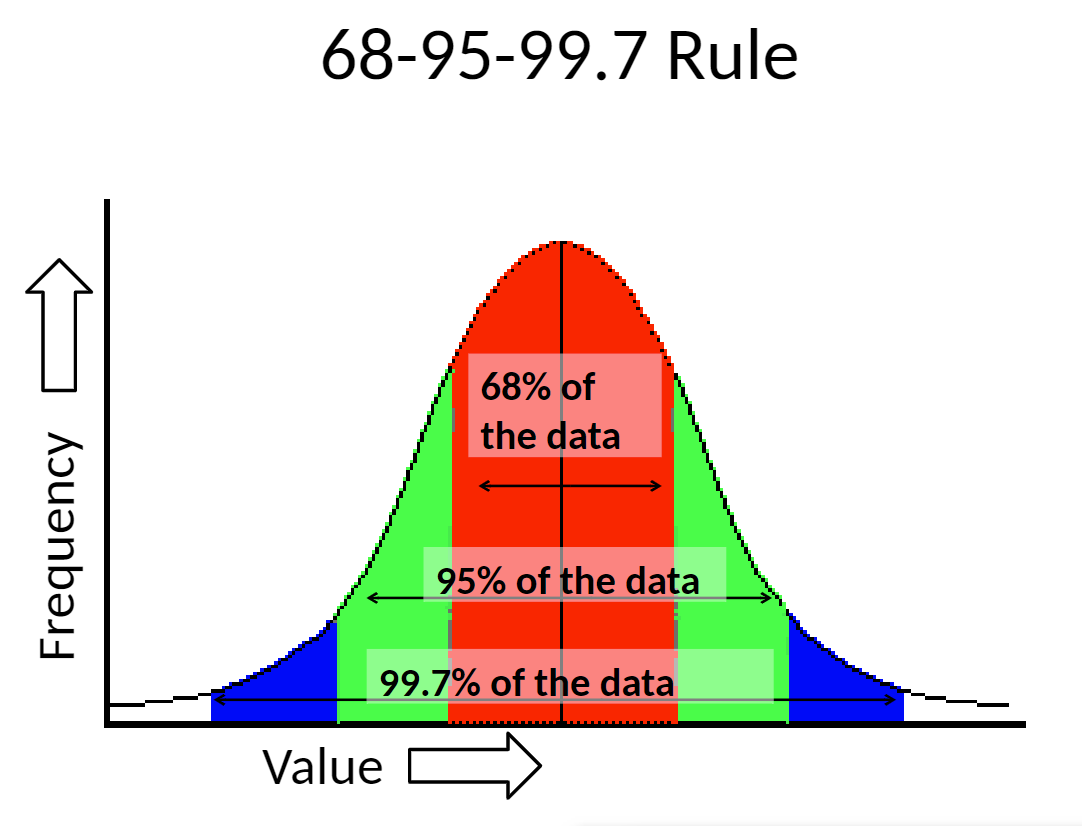
What is the area of a normal curve within 2 standard deviations (between μ+2σ and μ-2σ)
95%

What is the area of a normal curve within 3 standard deviations (between μ+3σ and μ-3σ)
99.7%

Code for a gaussian distribution
f(x) = gaussmf(x, [std mu])
std is the standard deviation
mu is the mean
x is the parameter under scrutiny
The standard normal distribution (z)
All normal distributions can be converted into the standard normal curve by subtracting the mean and dividing by the standard deviation
The probabilities given the z is in a table
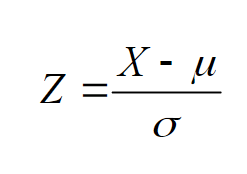
_ continuous random variables are normally distributed
NOT ALL continuous random variables are normally distributed
How to tell if your data is normally distributed
Look at the histogram! Does it appear bell shaped?
Compute descriptive summary measures—are mean, median, and mode similar?
Do 2/3 of observations lay within 1 std dev of the mean? Do 95% of observations lay within 2 std dev of the mean?
Look at a normal probability plot—is it approximately linear?
Every physical quantity has:
A value or size
Uncertainty (or Error)
Units

Error propagation equation to the first order if (∆x)/x is small:
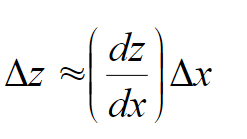
Equation for error propagation with addition and subtraction

Equation for error propagation with multiplication and division
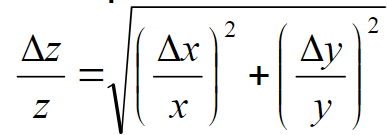
Result Formats
numeric value +- error margin units
floating point - scientific notation
rational - exact result
numeric - normal, general result
Errors in computational models
Those due to uncertainty in the formulation of the mathematical models and deliberate simplifications of the models
Caused by rounding, data uncertainty, and truncation
Truncation Errors
Results from using an approximation in place of an exact mathematical procedure
The difference between analytical and numerical solutions
Reasons for Math Modeling
Import meaning to data
Help obtain data
Help solve for specific conditions
Analytical Model
full mathematical solution
Numerical Model
Eulers, new value = old value + slope*step size, finite difference
Zero Order vs First Order vs Second Order
0: no change
1st: Linear change with change in x
2nd: Quadratic change with change in x
Any smooth function can be approximated as a
Polynomial
As the degree of the polynomial approximation _ the _ accurate the approximation
As the degree of the polynomial approximation INCREASES the MORE accurate the approximation
(adding more terms reduce truncation error)
Model Error
Incomplete mathematical models
e.g: E=mc²
Techniques to solve for roots
Graphically - rough and inaccurate
Trial and Error (using excel) - long winded
Automated methods (require an initial guess)
Bracketing Methods - Robust
2 initial guesses that “bracket” the root
Open methods - Faster
1 guess or more but no need to bracket
2 types of solutions for root finding
Implicit (cyclic)
Explicit (one specific solution)
Bracketing techniques for root finding
Incremental Search
Can work
Very inefficient
Bisection Method
False Position Method
Bracketing Bisection Full Process
Given upper and lower bounds (xl and xu)
[ determine xr, value halfway between xl and xu
Calculate f(xr)*f(xl) and f(xr)*f(xu), or only one if a root is guaranteed
A negative value determines the side the root is on.
f(xr)*f(xl) = -#, root on the left; f(xr)*f(xu) = -#, root on the right
Left: xr becomes xu. Right: xr becomes xl ]
Repeat bracketed until required degree of precision is met
False Position Method
Linear interpolation, root finding
Joins F(xl) and F(xu), intersection of line with x-axis = root estimate
Slope = [ F(xu) - F(xl) ] / [ xu - xl ] => [ F(xr) - F(xl) ] / [ xr- xl ] or xl -> xr
xu-xr = [ F(xu)*(xu-xl) ] / [ F(xu) - F(xl) ]
Issues: multiple roots, one fixed point, poor convergence for high curvature
faster than other bracketing methods, robust
![<ul><li><p>Linear interpolation, root finding</p></li><li><p>Joins F(xl) and F(xu), intersection of line with x-axis = root estimate</p></li><li><p>Slope = [ F(xu) - F(xl) ] / [ xu - xl ] => [ F(xr) - F(xl) ] / [ xr- xl ] or xl -> xr</p><ul><li><p>xu-xr = [ F(xu)*(xu-xl) ] / [ F(xu) - F(xl) ]</p></li></ul></li><li><p>Issues: multiple roots, one fixed point, poor convergence for high curvature</p></li><li><p>faster than other bracketing methods, robust</p></li></ul>](https://knowt-user-attachments.s3.amazonaws.com/f502b994-5690-40e0-95a9-fb292eae3b5d.jpg)
Steps of False Position Method
Start with 2 values that bracket a singular root, L and U
Calculate slope between the to points (draw line)
Where the line crosses the x axis is the x value for R (slope line y=0)
Find the correlating y value for the X_r on the function line
Last step:
If Y_r = 0 done
If Y_r * Y_l = pos replace L with R and repeat
If Y_r*Y_l = neg replace U with R and repeat

Open Methods Overview
fast
divergence issues sometimes
when they do converge they do so more quickly
require 1 starting value
3 possible results
Diverge
Converge Overdamped
Converge Underdamped
Types
Fixed point iteration
Newton Raphson
Overdamped (Convergence)
logarithmic like plot gradually approaching actual value

Underdamped (Convergence)
oscillate around actual value with slowly decreasing amplitude

Diverging (Convergence)
points away from actual value and gets further away over time

Fixed Point Iteration
Root finding open method
Rearranges function f(x)=0 to x=g(x)
done with algebraic manipulation or log or simply adding x to both sides
We use this to create a formula that predicts a new value of x as a function of a previous value
x(i+1) = g(xi)
Relative error = Ea = | [ x(i+1) - xi ] / x(i+1) | * 100%
Plot the x vs. g(x). Point of intersection = root
Spiral convergence or divergence
x0 -> g(x0) -> x=g(0) at x1 -> x1 -> etc.
![<ul><li><p>Root finding open method</p></li><li><p>Rearranges function f(x)=0 to x=g(x)</p><ul><li><p>done with algebraic manipulation or log or simply adding x to both sides</p></li></ul></li><li><p>We use this to create a formula that predicts a new value of x as a function of a previous value</p><ul><li><p>x(i+1) = g(xi) </p></li></ul></li><li><p>Relative error = Ea = | [ x(i+1) - xi ] / x(i+1) | * 100%</p></li><li><p>Plot the x vs. g(x). Point of intersection = root</p></li><li><p>Spiral convergence or divergence</p></li><li><p>x0 -> g(x0) -> x=g(0) at x1 -> x1 -> etc.</p></li></ul>](https://knowt-user-attachments.s3.amazonaws.com/20b99864-da2f-4860-8c30-47e701dd2369.png)
Fixed point Iteration Visualized
Plot the x vs. g(x). Point of intersection = root

Newton Raphson
Most widely used root finding method
Initial guess xi, extend tangent from the point [xi, F(xi)]
Point where tangent line crosses x-axis becomes improved estimate
F’(xi) = F(xi) / [ xi - x(i+1) ]
Fastest convergence, very efficient
Bad for: multiple roots, high curvature, local minima, sigmodal curves
Can have divergence or jumping between roots
Local min / max send estimate to - or + infinity lkk
x(i+1) = xi - F(xi)/F’(xi)
Backwards/Secant: x(i+1) = xi - F(xi) * [ xj - x(j-1) ] / [ F(xj) - F(xj-1) ]
![<ul><li><p>Most widely used root finding method</p></li><li><p>Initial guess xi, extend tangent from the point [xi, F(xi)]</p></li><li><p>Point where tangent line crosses x-axis becomes improved estimate</p></li><li><p>F’(xi) = F(xi) / [ xi - x(i+1) ]</p></li><li><p>Fastest convergence, very efficient</p></li><li><p>Bad for: multiple roots, high curvature, local minima, sigmodal curves</p><ul><li><p>Can have divergence or jumping between roots</p></li><li><p>Local min / max send estimate to - or + infinity lkk</p></li></ul></li><li><p>x(i+1) = xi - F(xi)/F’(xi)</p></li><li><p>Backwards/Secant: x(i+1) = xi - F(xi) * [ xj - x(j-1) ] / [ F(xj) - F(xj-1) ]</p></li></ul>](https://knowt-user-attachments.s3.amazonaws.com/425be4a0-4d93-47e3-b711-2b0c93717c7b.png)
MATLAB Root Finding
fzero(function, guess) → fzero( @x x²-9, 4)
Combo of bisection, secant, and inverse quadratic interpolation
can have guess as an interval [0 4] for positive roots
Polynomial - r=roots(c) being a row matrix of the coefficients of the equation
Opp: poly(r) = coefficients
Measuring Slope
Forward Difference
Slope = [ F(i+1) - F(i) ] / [ x(i+1) - x(i) ]
Backwards Difference
Slope = [ F(i) - F(i+1) ] / [ x(i) - x(i+1) ]
Centered Difference
Slope = [ F(i+1) - F(i-1) ] / [ x(i+1) - x(i-1) ]